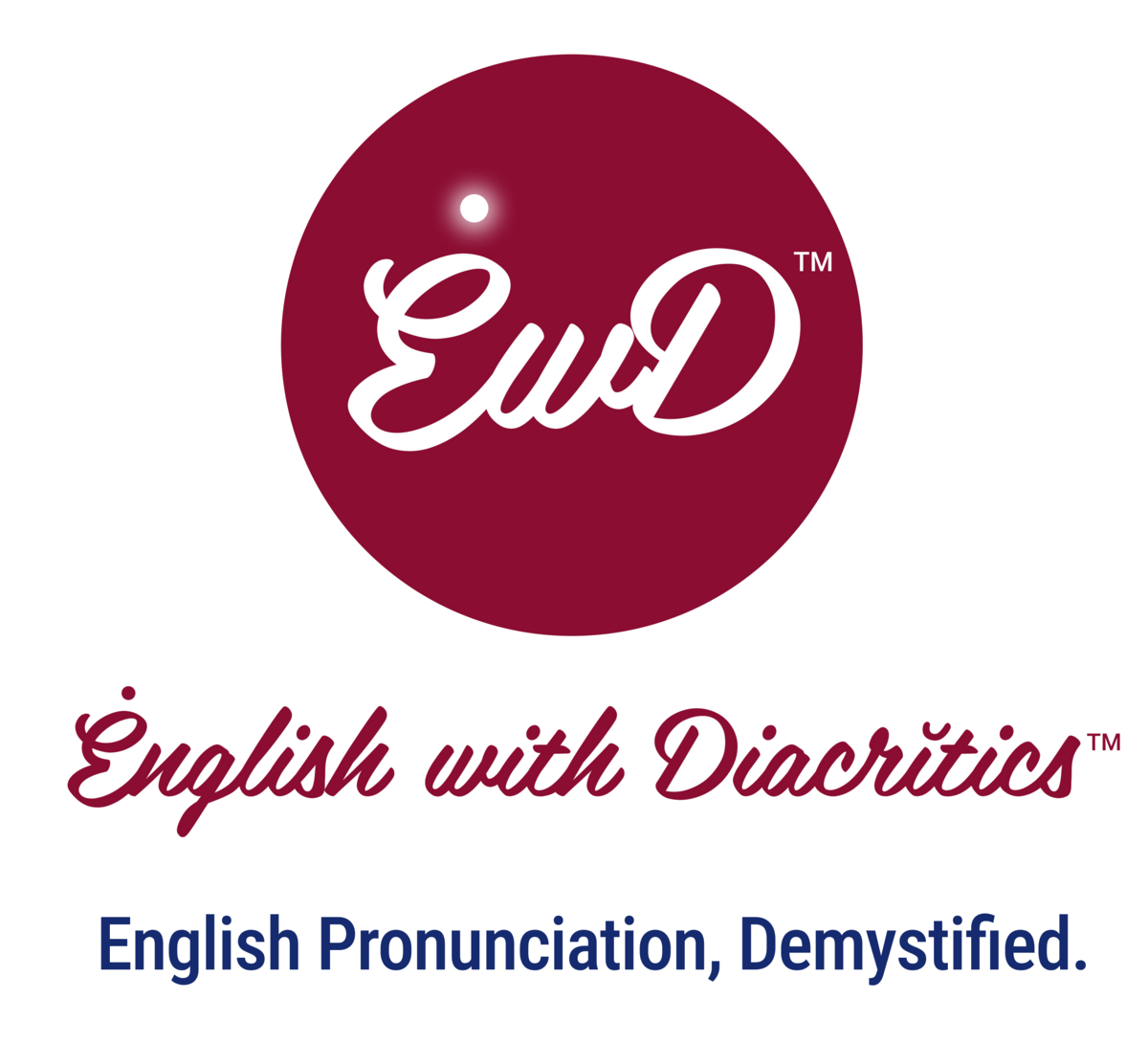English with Diacritics:
Bridging the Gap between Spelling and Pronunciation

Foreword
In a world where English dominates international communication, the numerable discrepancies between its spelling system and its pronunciation significantly hinder learning and everyday interactions. English with Diacritics™ (EwD™) aims to address these historical challenges by integrating diacritical marks to align pronunciation more closely with existing spelling. Accordingly, this initiative introduces a carefully conceived diacritical system designed to make the English language more accessible and readable, while leaving its traditional spellings essentially unchanged.
As we begin to develop and refine this innovative approach, we invite stakeholders from all backgrounds to join us in shaping a tool that has the potential to make English easier to master for millions worldwide.
Purpose
This manifesto articulates the foundational principles and evolving objectives of English with Diacritics. As we navigate the early stages of development—which include academic research, document elaboration, and experimental software works—we emphasize EwD's role as a dynamic extension of English designed to enhance linguistic understanding globally.
Principles
-
Clarity and Intuition in Pronunciation: EwD simplifies the complexity of English pronunciation by embedding intuitive diacritical marks. These visual cues offer immediate guidance, enabling learners to grasp the nuances of English pronunciation more effectively.
-
Adaptive Learning Support: EwD supports personalized learning paths tailored to meet the needs of diverse learners. With customizable settings and content that adapt to different proficiency levels and learning preferences, EwD ensures an optimized and effective learning experience for every user.
-
Accent Neutrality and Global Reach: EwD is meticulously designed to be neutral across various English accents, promoting a universally comprehensible system. This accent-agnostic approach makes English more accessible to speakers from different geographic and linguistic backgrounds, fostering global communication and understanding.
-
Technological Synergy: Seamlessly integrating with modern educational technologies, EwD enhances digital platforms such as language learning apps and accessibility tools. This integration ensures that EwD remains a relevant and powerful tool in the dynamic field of educational technology.
-
Ongoing Innovation and Collaboration: Committed to continual improvement, EwD evolves through ongoing research, incorporating feedback, and collaborating with linguistic, technological, and educational communities. This principle highlights the initiative’s dedication to innovation and ensures that EwD stays at the forefront of language education.
Goals
-
To provide a robust framework that supports learners in achieving fluency and accuracy in English pronunciation.
-
To create resources that educators can integrate seamlessly into existing curricula in order to facilitate the adoption of phonetic transparency.
-
To foster global partnerships that advance the adoption and recognition of EwD as a valuable tool for language learning.
The System
The EwD system incorporates carefully selected diacritical marks into standard English text. Designed to be intuitive and minimally invasive, these marks offer a sufficiently precise guidance on various acoustic aspects of English, such as vowel quality, stress patterns, and consonant articulation. The following subsections outline how EwD plans to address these complexities, customize learning experiences, and integrate with current technologies.
Addressing Complexity and Dependency
The EwD system employs a continuous scaffolding strategy, introducing diacritics gradually to aid initial learning, and systematically reducing their use as learners advance. This method supports both effective onboarding and ongoing development, ensuring a smooth transition to diacriticless spelling while promoting confidence and independence throughout the learning process. For more details, see Learning and Progressing in the EwD Guide (section to be released).
Customization and Flexibility
EwD can be tailored to meet individual learner needs, accommodating different learning styles and proficiency levels. This flexibility ensures that EwD is a versatile tool for language learners worldwide. For more information, see Individualization in the EwD Guide (section to be released).
Technological Integration and Innovation
EwD is designed for integration into digital platforms, enhancing the functionality of text-to-speech technologies and language learning applications. This makes the system cover a wide range of educational settings and self-study scenarios.
Commitment to Research and Development
Our commitment to ongoing research ensures that the EwD system and methodology evolve based on the latest linguistic research and user feedback. Collaborations with academic institutions and continuous technological updates will keep EwD at the forefront of language innovation.
Conclusion
As an early-stage initiative, English with Diacritics™ stands as a promising development in the evolution of English. By joining us at this foundational level, stakeholders have a unique opportunity to shape the future of how English is learned and used across the globe. Together, we are committed to innovation and inclusivity in linguistic practice, making English not only a global language but also a more accessible and effectively learned language.
